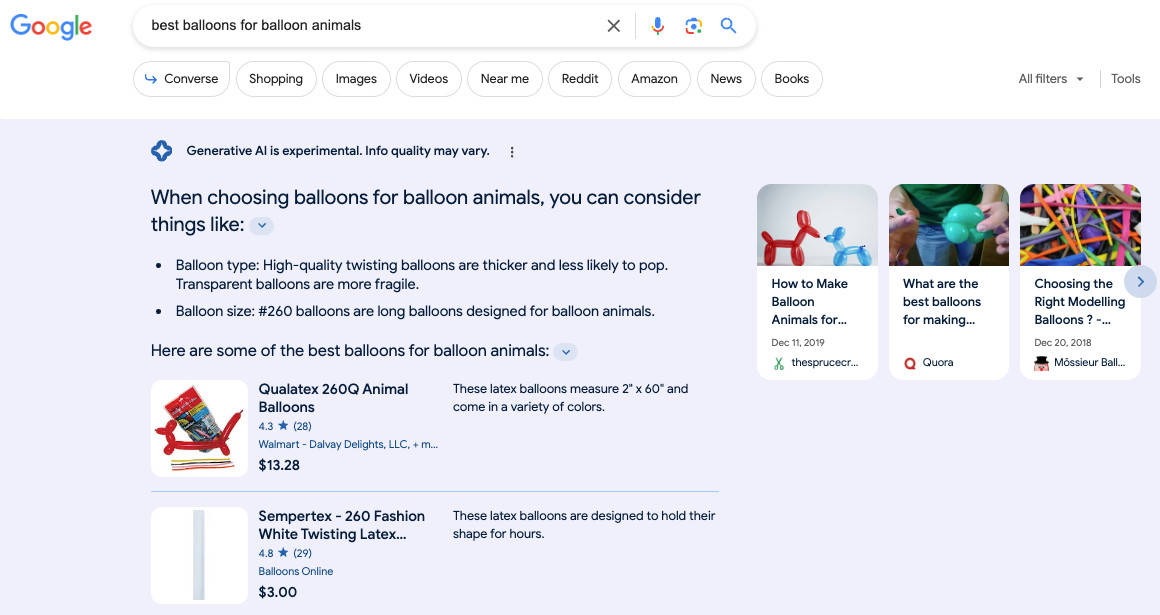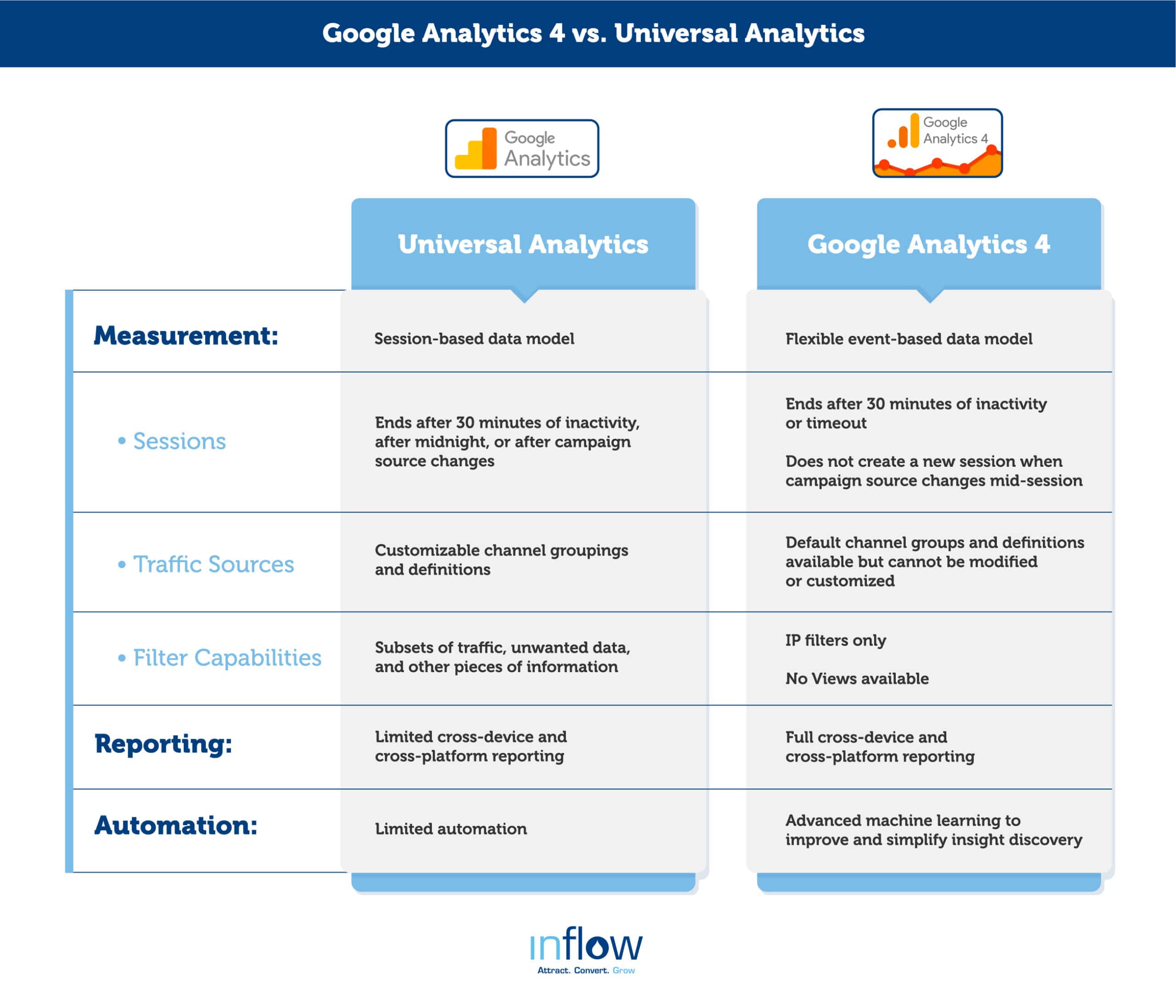Over the last six months, we’ve talked a lot about Google’s new Search Generative Experience: what it means for SEO, how you should prepare, and what it may look like when it launches after its beta period is complete.
But, with the beta period being recently extended, and no mass application of SGE yet seen in the wild, many marketing teams have been left in unfortunate limbo — knowing the changes are coming, but continuing with originally scheduled programming when it comes to their search engine optimization efforts.
In today’s guide, we’ll help bridge that gap with a four-step process your teams can use to start prepping for SGE, whatever it ends up looking like whenever it does launch.
We’ll also share some findings from our initial prep work with our clients, including our recommendations for successful post-SGE organic search marketing.
Keep reading to learn more — or, if you need an expert’s help getting your SEO strategy in line, reach out to us anytime.
How to Prepare Your Marketing Teams for the Upcoming Launch of SGE
Lots of people (including some of Inflow’s clients) simply can’t wrap their heads around the uncertainty of SGE: when it’s coming, what it looks like, etc.
But here’s the truth: SGE is going to change the Google search results forever.
Just as with other big updates in the past, we’re anticipating that top keywords and traffic for most businesses are very likely to change in the post-SGE SERPs. If the Search Generative Experience is launched as-is, the majority of brands will see a huge impact on their organic performance, with certain studies indicating that only about 4.5% of generative URLs currently match a URL in the organic search results.
Knowing that these major changes are coming, client education and preparation has become a huge focus for our SEO agency. \
While every industry and vertical is different, there are a few strategies that we’re recommending to all brands to prepare for the Search Generative Experience, in whatever form it’s finally released.
Step 1: Educate yourself.
Firstly, education is key. The beta form of SGE is constantly changing, but that’s not an excuse for waiting until its final form to learn about it.
Here at Inflow, our SEO team has been analyzing SGE results since the beta first launched. By reviewing the changes Google has implemented over the last few months, we’ve developed a better understanding of how the system works and can make more educated guesses on what the live version will look like.
Your marketing teams should be doing the same. Familiarize yourself with the SGE beta (you can opt in via your account settings) and how interacting with the feature can change the AI-generated content.
For more education, we recommend watching our complete SGE webinar, where we discuss our staff findings:
The video below is hosted on YouTube. If you need assistance with viewing the video, please contact [email protected].
Step 2: Do a pre-SGE analysis.
Your organic performance is almost guaranteed to be affected by the SGE rollout. But, to better understand those changes, you’ll need to have a comparison baseline.
We’ve been conducting extensive pre-SGE analyses for our clients, with important performance notes, lists of top keywords, etc. We’ll use these reports to compare against their post-launch performance for a more comprehensive look at exactly how (and where) the Search Generative Experience impacts each client’s SEO.
Conduct your own analysis by following these steps:
Choose which metrics to measure.
First, determine which metrics to include in your report. Obviously, this includes all the big SEO ones (organic impressions, clicks, and traffic) but we also recommend bringing in more “big picture” data (such as overall revenue) to put those other metrics in context.
Unfortunately, we don’t know how (or if) Google will release search and performance data related to SGE. While clicks from SGE content to your website will likely still be tracked, tracking impressions from the SGE box will be more difficult, especially if a user doesn’t click to your site from the AI-generated responses.

That said, we do anticipate that tools like Ahrefs and Semrush will make platform changes to fill the gaps.
The more metrics you can include in your report, the more flexible your team can be in comparing data points pre-SGE and post-SGE.
Make sure everything is tracking correctly.
Of course, the data you’re gathering today is only as accurate as your Google Analytics 4 setup.
GA4 has required a massive shift in reporting strategy for many marketing teams, and some are still catching up. If you’re barely making use of Google Analytics 4 right now, you’ll have a difficult time truly understanding (or even seeing!) any effects of SGE upon your website traffic.

We recommend starting with our step-by-step Google Analytics audit to identify and remedy any missing data in your GA4 tracking.
You can also reach out to our team for help; we’re happy to audit your accounts and create a custom tracking/reporting solution for your needs.
Conduct your analysis.
Once you have your data in order and your report created, it’s time to uncover what your current performance is telling you.
Take your top keywords, for example. If you’re ranking for certain terms in the pre-SGE search results, but don’t appear in the SGE box in a beta search, you can anticipate a drop in impressions (and likely traffic) to related content on your site.
By conducting this analysis before SGE launches, you’ll be ahead of other brands scrambling to understand why their organic performance is changing so drastically. Even better? You’ll know where to expect these changes, which means that you can make strategy optimizations quicker.
Step 3: Create Your SGE Strategy.
After conducting your pre-SGE analysis, you’ll have a good idea of where to focus your efforts, based on where you can anticipate some of the greatest impacts on your organic performance.
We also recommend incorporating the following into your optimization strategy:
- A focus on branded content: SGE will pull information about your brand and business/products based on what it gathers from the web. Creating strong branded content across multiple sites will make it more likely that accurate, helpful content about your business appears in the SGE box.
- Topical authority and E.E.A.T.: Google will be looking for high-quality content to feed its AI machine, so, if you haven’t already, renew your efforts to establish and retain topical authority in your industry. (Learn more about our proven EAT SEO tactics in this case study.)
- External linking efforts: Links and other external authority signals will help Google decide which sources to trust and use in its generated responses. Boosting your backlinking efforts (white-hat only!) will help establish your content’s authority.
- Middle- and bottom-funnel content: Because top-of-funnel content will now be easily answered by SGE, focus on optimizing and enhancing your MOFU and BOFU content, as this will be more likely to appear in the SGE box with an associated link to read more.
For more recommended strategies from our experts, you can check out our complete list of SEO tips for SGE.
And remember: If you’re not sure which SEO efforts to focus on in the next few months, our team is always happy to create a custom strategy for your website.
Step 4: Think About the Big Picture.
Finally, remember that the launch of SGE isn’t just about your organic performance. That’s where you’ll likely see the biggest impacts, but the effect of advances like this will be felt across your entire marketing strategy.
For our clients, we’re taking the extra step to tie any SGE impacts to the big picture. What are the overall marketing and revenue goals we’re trying to achieve? What are the biggest projects for the brand in 2024?
Then, we can take a more comprehensive look at how SGE may affect those overall goals and build a omnichannel strategy to address them — not panic about the ongoing unpredictability of organic search performance.
If you’re part of an in-house marketing team, you should also consider how you’ll present any of these changes upwards to stakeholders. We’re anticipating a great deal of instability in the SERPs and resulting traffic once SGE launches; the more concise and informational you can be when describing these to your C-levels, the more support and understanding you’ll be likely to get.
Our Final Note: Start Preparing Now
While the Search Generative Experience hasn’t rolled out completely quite yet, it’s only a matter of time before it’s released en masse in the SERPs. If you wait until then to start building your strategy, it will already be too late.
There is plenty of analysis and prep that can be done right now to get your marketing teams ready for SGE. By creating a list of action items and getting some of them done before SGE, you’ll be miles ahead of competition who have their heads in the sand.
Of course, we can’t fully predict what the final Search Generative Experience will look like. With the beta version frequently changing, there’s only so much SEO teams can do right now — but even the smallest bit of prep will pay off in dividends in the long run.
In the meantime, we encourage you to stay up-to-**** on all things SGE (Inflow’s blog is a great place to start). Should you need assistance analyzing your site and developing your personal SGE strategy, schedule a consultation with our SEO experts to see how we can help.
